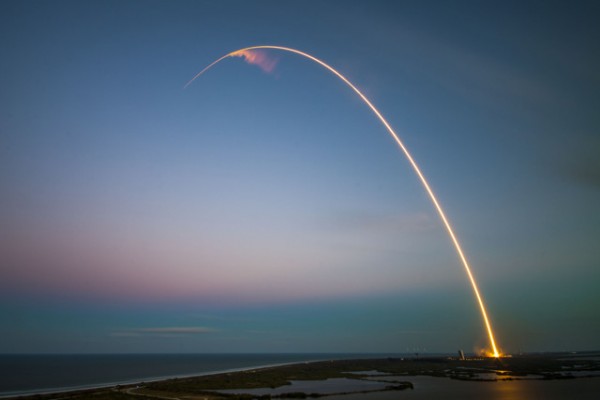By Ana Verayo, | March 06, 2016

SES-9 spacecraft now in Geostationary Transfer Orbit, 40,600 km in altitude.
After many consecutive rocket launch delays from last week, SpaceX finally successfully launched a communications satellite into orbit on March 4.
The new version of the Falcon 9 rocket finally blasted off from the Cape Canaveral Air Force Station in Florida around 6:35 P.M. EST to launch a commercial SES-9 communications satellite into lower Earth orbit, making this a successful event however, getting the rocket back to land became an immediate challenge.
Like Us on Facebook
As the satellite was launched from the rocket and began settling into its final orbit, it achieved a final altitude of not less than 25,000 miles. However, when the rocket re-entered the Earth's atmosphere after releasing the satellite, it landed hard and exploded on the drone ship which is its landing target, according to a tweet by SpaceX CEO Elon Musk.
Musk tweeted, did not expect this one to work due to very hot re-entry, but next flight will have a good a chance, where he also thanks SES for trusting the Falcon 9 rocket for the mission as he is also looking forward to future space missions.
SpaceX has been focusing on reusable rocket technology for quite some time now to establish this for future space missions and at the same time, slashing expensive space launch costs. SpaceX attempted to land its rocket's first stage on a floating ocean barge or drone ship off the coast of Florida as the private space company aims to develop this reusable rocket technology at the soonest launches, but successful vertical rocket landings have been elusive.
As the Falcon 9 rocket's first stage lifted off and separated from the upper stage after two and a half minutes after lift off, two of its engines re-ignited for its return back to Earth on the drone ship target landing some 200 miles off the Florida coast.
There were also three last attempts between January and April 2015 and just last month for the first stage of the Falcon 9 to execute a successful vertical landing on a floating ocean barge. However, all previous attempts were unsuccessful, as the booster tipped over the deck of the ship and exploded on all three occasions.
However, last December, SpaceX was able to land the Falcon 9 rocket vertically on land at the Air Force Station 1 at Cape Canaveral, Florida, which also marks the first successful attempt after an orbital launch.
Prior to this successful launch, SpaceX scrubbed the last launch last March 2 due to bad weather and high altitude winds. Re-launch day was supposed to be scheduled on Thursday but was moved on Friday, March 4, instead.
-
Use of Coronavirus Pandemic Drones Raises Privacy Concerns: Drones Spread Fear, Local Officials Say

-
Coronavirus Hampers The Delivery Of Lockheed Martin F-35 Stealth Fighters For 2020

-
Instagram Speeds Up Plans to Add Account Memorialization Feature Due to COVID-19 Deaths

-
NASA: Perseverance Plans to Bring 'Mars Rock' to Earth in 2031

-
600 Dead And 3,000 In The Hospital as Iranians Believed Drinking High-Concentrations of Alcohol Can Cure The Coronavirus

-
600 Dead And 3,000 In The Hospital as Iranians Believed Drinking High-Concentrations of Alcohol Can Cure The Coronavirus

-
COVID-19: Doctors, Nurses Use Virtual Reality to Learn New Skills in Treating Coronavirus Patients







